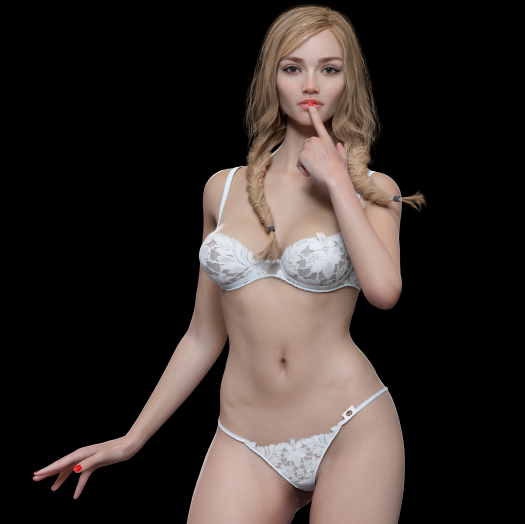Try Undress AI Free Now: Explore Nudify AI & More!
Could artificial intelligence really strip away the boundaries of digital imagery, offering unprecedented creative freedom, or is it venturing into ethically ambiguous territory? The rise of "undress AI" applications is undeniably reshaping the landscape of image manipulation, promising innovative tools while simultaneously raising critical questions about consent, privacy, and the potential for misuse.
The allure of these technologies is multifaceted. Platforms like UndressAI, for instance, are providing free tiers that allow users to experiment with their core functionalities, eliminating the need for credit card details. This accessibility, combined with the promise of effortless image transformation, is a powerful draw. Users are invited to "try it now and explore its features," and the core technology is presented as something to be tested and experimented with. This approach aims to normalize the technology by offering it as a tool for creative expression, a means to "transform portraits" or "seamlessly swap outfits" to fit fashion designs or other creative projects. There are claims that these tools can revolutionize the fashion design process, where they could allow designers to prototype and visualize new clothing concepts on models without physical garments.
The market is brimming with options, from the "11 best free undress AI apps" to specialized tools such as Muke's AI, which is touted as "the best undress app." Unclothy stands out as another contender, promising to automatically detect and remove clothing, generating "deepnude" images. Undressher, undress.app, and others, are all vying for attention, each offering a unique spin on the technology. Some like "Anieraser's AI clothes remover" are marketed as "advanced online tools."
The core function is consistent: enabling users to remove clothing from images using artificial intelligence. Whether marketed as a tool for "creative projects," "fashion design," or for purely personal exploration, the underlying technology is the same. These apps are also marketed as fun ways to "nudify photos." There is the implication that AI can be used to edit out unwanted elements and to "undress subjects to create nude images" and that the whole process takes a few seconds.
Many tools are positioned as easy to use, requiring minimal effort from the user. "Simply upload a photo," the instructions often read, "and let the AI do the work." Even a Telegram bot, Clothoffbot, is highlighted for its discreet operation.
The technology utilizes advanced AI models to automatically detect clothing and remove it from the images. This is often presented as an "innovative" and "revolutionary" application of AI, with companies promising "precise and realistic results." The aim is to make this technology accessible to everyone.
The following table provides an overview of the core functionalities and key considerations associated with "undress AI" applications.
| Feature | Description | Implications |
|---|---|---|
| Functionality | Automated removal of clothing from images using AI algorithms. | Raises questions about image manipulation, consent, and privacy. |
| Accessibility | Free tiers and user-friendly interfaces, often with no registration required. | Broadens the potential for both positive and negative uses of the technology. |
| Applications | Fashion design (prototyping), creative projects, personal use. | Highlights the dual nature of the technology, offering both creative and potentially harmful applications. |
| Ethical Concerns | Potential for misuse, non-consensual image creation, and privacy violations. | Emphasizes the need for responsible development and usage of the technology. |
| Technological Advancements | Advanced AI models for accurate and realistic results. | Highlights the rapid evolution of AI in image manipulation. |
| Commercialization | Free and paid options, highlighting the market interest in undress AI. | Indicates a growing industry with potential financial interests. |
The core of these apps is the AI itself. By leveraging advanced artificial intelligence models, these tools claim to accurately identify and remove clothing from images. This process, at least in the marketing, is often simplified, described as a matter of uploading an image and letting the AI do the rest. "Experience the fun and excitement of AI to nudify photos like never before!" some promotional material exclaims.
The ability to "remove clothes from photos with our online AI nudifier for free" is a common sales pitch. "Imagine swapping a model's lingerie from a classic black to a playful pink or a vibrant blue with just a click," the marketing material states. This ease of use is a central element of the appeal.
Tools like "greys secret room" leverage advanced AI, but details about the inner workings are often kept vague, focusing instead on the end result. The promise is of fast, efficient results, with some bots on platforms like Telegram claiming to deliver in seconds.
Some platforms also emphasize the importance of user input. For instance, providing "briefly describe the keyword information of the clothes you need to remove" to assist AI in accurate identification.
Ultimately, these "undress AI" applications offer a glimpse into the future of image manipulation. The question is: how will the users and society overall navigate the implications?
A core consideration is consent, as non-consensual image creation can have serious repercussions. Many apps are designed as image editing tools or as a method to prototype new clothing concepts. Despite those positive functions, the potential for misuse, including creating deepfakes and images without consent, is significant.
The user's responsibility is a key concern. Even the most secure platforms cannot completely prevent malicious use, and users are urged to exercise caution and respect ethical guidelines when engaging with these technologies. "Whether youre looking for a safe and reliable undress app, or simply want to experience the innovative technology behind undress.ai, we've got you covered."
As these technologies continue to evolve, it is critical to maintain a careful balance between innovation, accessibility, and ethical conduct. "Undress ai image editing has become a popular form of artistic expression" and "remove clothes from photos with our online ai nudifier for free," with the emphasis now, always, on responsibility.
For more in-depth information on AI ethics and the responsible use of AI technologies, you can consult the following resources:
AI Ethics Resources


